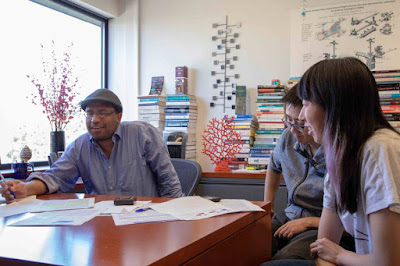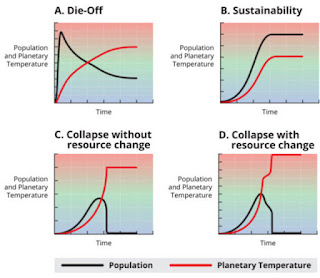 |
| Image Source: Link below |
Topics: Alternative Energy, Chemistry, Green Energy, Nanotechnology, Photosynthesis
New nanoarchitecture generates hydrogen, Alex Lopatka, Physics Today
 |
| Image Source: Link below |
Topics: Alternative Energy, Chemistry, Green Energy, Nanotechnology, Photosynthesis
New nanoarchitecture generates hydrogen, Alex Lopatka, Physics Today
Topics: Civil Rights, Diversity, Human Rights, Politics
*****
*****
Kavanaugh contradicts White House account of credit card debt, raising more questions Luppe B. Luppen, Yahoo News
Topics: Astrophysics, Infrared, Neutron Stars, Neutrons, X-rays
Weird Infrared Signal Emanates Across Space, But What Created It?
Yasemin Saplakoglu, Live Science
During the heady days of the Black Cultural revolution in Chicago, there was a lot of art dealing with this hope and concept. The mainstream galleries, Black art curators, historians and critics mostly stayed away from it. Then once certain major players in this died in came the White parasites. One a college professor the other a Jewish art dealer. Both swooped in making deals to sell works, with the other building a entire career path for herself. Now they are the accepted go-to authorities of this movement. That they treat as a dead slave on their plantations. "The Black Art Movement" now produces no revenue or power for the people it were supposed to benefit.
And all of this happened due to the "Black on Black boycott" that allowed non-Blacks to walk in a take it to the bank. WHen Black do not support and endorse its own positives others come in later to reap its resources, power & wealth.
Sort of like Jazz, The Blues, Peanut Butter and Hip Hop.........
I plan to write about this and be sure, in my life time this will not happen to the growing Black Age of Comics Movement.
Topics: Heisenberg Uncertainty Principle, Nanotechnology, Schrödinger's cat, Quantum Mechanics, Thermodynamics
Bizarre Physics Phenomenon Suggests Objects Can Be Two Temperatures at Once
Meredith Fore, Live Science
Topics: Modern Physics, Nanotechnology, Quantum Computer, Quantum Mechanics
 |
| Hasan discusses the discovery with Yin and Zhang in his office in Jadwin Hall.Photo byNick Barberio, Office of Communications |
Princeton scientists discover a ‘tunable’ novel quantum state of matter
Liz Fuller-Wright, Office of Communications, Princeton University
Topics: Civil Rights, Diversity, Existentialism, History, Human Rights
Dwyer, Michael D., "Back to the fifties: Pop nostalgia in the Reagan Era" (2010). English - Dissertations. 54. https://surface.syr.edu/eng_etd/54
*****
This country has been surprised by the way the world looks now
They don't know if they want to be Matt Dillon or Bob Dylan
They don't know if they want to be diplomats ...
Or continue the same policy of nuclear nightmare diplomacy
John Foster Dulles ain't nothing but the name of an airport now
The idea concerns the fact that this country wants nostalgia
They want to go back as far as they can ...
Even if it's only as far as last week
Not to face now or tomorrow, but to face backwards
And yesterday was the day of our cinema heroes
Riding to the rescue at the last possible moment
The day of the man in the white hat or the man on the white horse ...
Or, the man who always came to save America at the last moment
Someone always came to save America at the last moment
Especially in "B" movies
 |
| Image Source: AARP, which up to this moment, I didn't realize was so "woke." |
Topics: Climate Change, Existentialism, Global Warming, Star Trek
 |
| Image Source: DC Wiki |
Topics: Existentialism, Global Warming, Politics
Trump admin. proposes rollback of methane rules to save industry $484 million The new rules would save regulatory costs for industry at a huge cost to climate. Megan Geuss, Ars Technica
Topics: Climate Change, Global Warming, NASA, Stochastic Modeling, Research, Weather
 |
| In a new study, Asst. Prof. Edwin Kite finds ocean planets could stay in zone of habitability longer than previously assumed. Copyright istockphoto.com |
Topics: Astronomy, Astrobiology, Astrophysics, Exoplanet, Planetary Science, Space Exploration
Analysis by UChicago, Penn State scientists challenges idea that life requires ‘Earth clone’
Louise Lerner, University of Chicago News
 |
| Jocelyn Bell Burnell discovered pulsars as a PhD student.Credit: David Hartley/Shutterstock |
Topics: Astrophysics, Diversity, Diversity in Science, Nobel Prize, Pulsar, Women in Science
Pulsar discoverer Jocelyn Bell Burnell wins $3-million Breakthrough Prize
Zeeya Merali, Nature
Related link:
Scientist Robbed of Nobel in 1974 Finally Wins $3 Million Physics Prize — And Gives It Away
Rafi Letzter, Live Science
 |
| Ferdy on Films - The Manchurian Candidate |
Topics: Commentary, Existentialism, Politics
Topics: Astrophysics, Cosmology, Einstein, Special Relativity, Star Trek
Faster Than Light? Neutron-Star Merger Shot Out a Jet with Seemingly Impossible Speed
Mike Wall, Space.com
 |
| Moving pictures: microscope image of a quasicrystal two days after release. The right half has been color coded. (Courtesy: Po-Yuan Wang and Thomas Mason/Nature) |
Topics: Brownian Motion, Einstein, Quasicrystal, Theoretical Physics
Brownian motion melts a quasicrystal of tiny Penrose tiles
Soft Matter and Liquids, Physics World
 |
| Operation Upshot-Knothole at the Nevada Test Site on April 18, 1953. Credit: Getty Images |
Topics: Biomedicine, Commentary, Existentialism, Nuclear Power, Philosophy
U.S. Is Woefully Unprepared for Nuclear Strike, Sarah Reardon, Scientific American
Related link:
10 Chilling Facts About The MAD Doctrine – Mutually Assured Destruction, Joris Nieuwint, War History Online
Occasionally, I will alert fellow members to product updates by creators I have reviewed in the past year or so.
Here's what I found this week since I had extra time because it RAINED TOO MUCH!!!
That's all I got this month. If you see a creator I've reviewed doing new stuff, post a comment down below.
Topics: Climate Change, Ecology, Economy, Existentialism, Politics
Source: Rachel Carson dot org
Topics: African Americans, Civics, Civil Rights, History, Human Rights, Politics
Definition of MONKEY WITH
informal : to handle or play with (something) in a careless way : to monkey around with (something) I told you not to monkey with the lawn mower.
Definition of MONKEY
: a nonhuman primate mammal with the exception usually of the lemurs and tarsiers : a person resembling a monkey : a ludicrous figure : dupe
: mimic, mock : to act in a grotesque or mischievous manner Merriam-Webster
Definition of PROPAGANDA
1 : capitalized : a congregation of the Roman curia having jurisdiction over missionary territories and related institutions 2 : the spreading of ideas, information, or rumor for the purpose of helping or injuring an institution, a cause, or a person 3 : ideas, facts, or allegations spread deliberately to further one's cause or to damage an opposing cause; also : a public action having such an effect Merriam-Webster
*****
Fandango movie trailer: Active Measures
 |
| University of Rochester illustration / Michael Osadciw |
Topics: Astrobiology, Climate Change, Mathematical Models, Planetary Science, SETI
Researchers Envision Four Climate Change Scenarios for Civilization-Planet Systems
Science, Space and Robots
#P4TC: ET and Climate Change...June 25, 2014